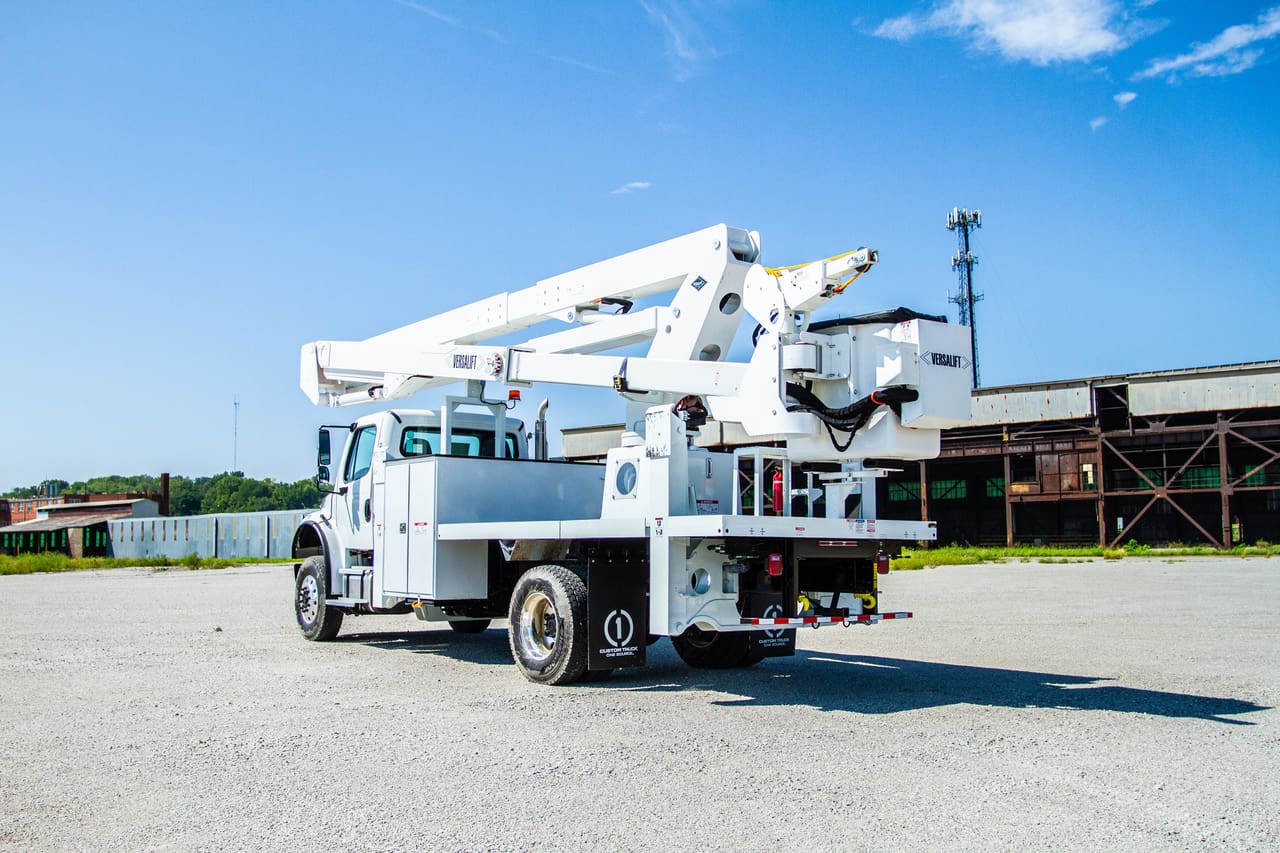
From telecom and forestry to construction firms and local utility companies, bucket trucks are fast becoming the primary vehicles for many industries today. Bucket trucks enable workers to safely reach heights of more than 100 feet. Additionally, buckets can reposition to reach out-of-the-way spots that would be impossible or unsafe to attempt with a ladder or scissor lift. One type of bucket truck that is increasing in popularity and use each day is the material handling bucket truck.
As the name suggests, these unique bucket trucks focus on the material handling features that distinguish this type of truck from other bucket trucks. They are modified versions of traditional more traditional bucket trucks. Manufacturers design them specifically to maneuver moderate sized loads in addition to supporting personnel in buckets. The purpose of a these bucket trucks is the quick, safe, and easy movement of materials. They make the job much safer and more efficient compared to doing it manually.
While there are many benefits of using a material handling bucket truck, operating the truck safely requires knowledge of the differences between a traditional bucket truck and a material handling truck, as well as the skills for properly handling loads. So, what makes these bucket trucks useful? We can best explain this through uses and benefits.
The Uses and Benefits of Material Handling Bucket Trucks
A bucket truck with a material handler makes it easy to move material from one spot to another. This can entail pivoting, turning, or stacking the material. This helps cut down on human fatigue. It also ensures safe handling of equipment which is difficult and unsafe to move manually.
Additionally, a bucket truck with a material handler can stabilize or hold equipment to prevent movement during transportation or storage. They can lift heavy loads without additional equipment or special rigging.

